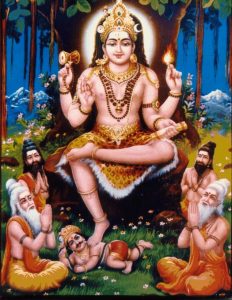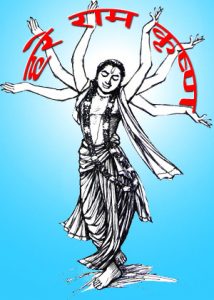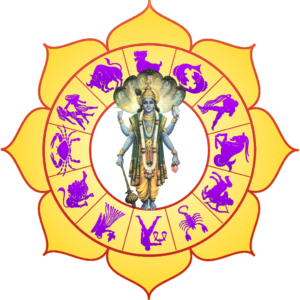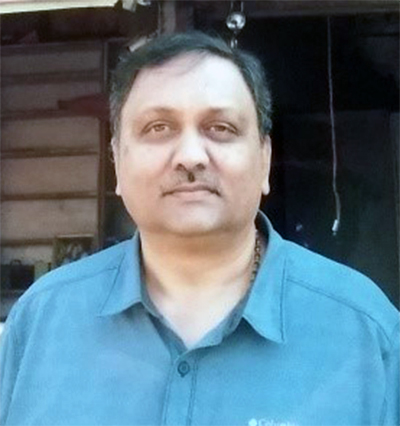Vidya, Jnana and Mantra
As you know we have a contact class for a short period where we teach some of the topics of the PJC and get an opportunity to meet with the students. The interaction is very beneficial for both as in the end, this is a guru-shishya parampara or ancient Indian traditional method of teaching. The Gurukula system envisaged that the ‘Guru’ or plural ‘gurus’ or female ‘gurvi’ would be like the elders of a joint family system and the shishya would be like the children. Age was never a factor as learning was allowed at all ages and all stages. It is the knowledge alone that was respected as all knowledge is ‘Shiva’ – after all Shiva is jnana-rupa. Many times the students were much elder than the guru. Knowledge is the only consideration here for defining who is the guru – the one who has the knowledge and who is the shishya – the one seeking that knowledge.
Knowledge is Shiva
 No human being in this world can have all the knowledge in every subject. If he did he would be Shiva. Therefore all gurus are also shishya in other subjects and they too are striving to increase their levels of knowledge in that subject. The day any human being stops learning and arrogates that he is the repository of all knowledge, he is actually mocking Shiva. His foolishness will only be his own downfall as what other purpose can any soul have in this planet other than to acquire knowledge. Everything else we do is only meant to support his continuous learning of all subjects and all knowledge. Why are we doing this? Because we want to become like Shiva, we want to become enlightened … in all subjects – that’s important. The entire basis of Advaita is that when we have such knowledge, we become like Shiva and then we can merge in Him. This is one of the types of Moksha. Now don’t get caught up with the advaita-dvaita debate … both are taking place simultaneously. Isn’t that what Chaitanya said? One point is clear now that the subject matter is Parvati and is called ‘vidya‘ and that the knowledge in the subject is Shiva and is called jnana.
No human being in this world can have all the knowledge in every subject. If he did he would be Shiva. Therefore all gurus are also shishya in other subjects and they too are striving to increase their levels of knowledge in that subject. The day any human being stops learning and arrogates that he is the repository of all knowledge, he is actually mocking Shiva. His foolishness will only be his own downfall as what other purpose can any soul have in this planet other than to acquire knowledge. Everything else we do is only meant to support his continuous learning of all subjects and all knowledge. Why are we doing this? Because we want to become like Shiva, we want to become enlightened … in all subjects – that’s important. The entire basis of Advaita is that when we have such knowledge, we become like Shiva and then we can merge in Him. This is one of the types of Moksha. Now don’t get caught up with the advaita-dvaita debate … both are taking place simultaneously. Isn’t that what Chaitanya said? One point is clear now that the subject matter is Parvati and is called ‘vidya‘ and that the knowledge in the subject is Shiva and is called jnana.
In jyotish these are the 4th and 5th houses respectively – 4th is the Vidya Mandir or temple of learning while 5th is the Jnana Bhandara, the repository of knowledge. Since the natural 4th sign is Cancer, we say the Moon, the lord of Cancer, has the Mother Parvati as its pratyadi-devata. Similarly since the natural fifth sign is Leo, we say the Sun, the lord of Leo, has Lord Shiva as its pratyadi-devata.
Vishnu is Relationship
There are millions of subjects, some known and others unknown to mankind. How do we even get to know of them? How do we develop a liking for a subject, then find a teacher, then get admission into a course and then start learning? How do we continue to learn the subject? All this happens by the grace of Vishnu. He is all that and much more as He sits in the heart chakra and makes us like something by giving us the right information based on which we get to know and then gradually start liking. It is only by his grace that we can continue to learn the subject as he ensures that the relationships with the subject, the books, the time, the teachers, the gurus are all being maintained. By the flick of his little finger he can cause the like to be converted into dislike – be it for the subject, time or place or even the teacher. Then the learning stops …and sorrow envelopes the shishya as well as the guru. It was a good opportunity lost for both. The shishya missed the learning opportunity while the guru will not get more knowledge as he failed to share.
Tattva
 Vidya is Jala tattva, Jnana is Agni tattva while Sambandha (relationship) between all that is Akasha tattva. In all we learnt above, the one thing which is the hand of destiny, which can change and is subject to human vagaries as well as destiny, is the sambandha which is controlled by Vishnu. Vishnu takes multiple forms, in fact countless forms. For our jyotish studies we have ten principal forms we call ‘yuga-avatara’. There are many other forms and each is very important – we learn this much later as Parashara has devoted a chapter to this topic but the tradition shall devote much more time and resources.
Vidya is Jala tattva, Jnana is Agni tattva while Sambandha (relationship) between all that is Akasha tattva. In all we learnt above, the one thing which is the hand of destiny, which can change and is subject to human vagaries as well as destiny, is the sambandha which is controlled by Vishnu. Vishnu takes multiple forms, in fact countless forms. For our jyotish studies we have ten principal forms we call ‘yuga-avatara’. There are many other forms and each is very important – we learn this much later as Parashara has devoted a chapter to this topic but the tradition shall devote much more time and resources.
We have previously determined that Vidya → 4H → Parvati → Cancer → Moon. Now we have also been taught by Parashara that the holy avatara name associated with the Moon, the Chandra-avatara is Krishna. This name has the power to ensure that our sambandha with the Moon is always going to be good. This has multiple implications including eating good food, respecting family and home besides always respecting and loving Vidya. Similarly, Jnana → 5H → Shiva → Leo → Sun. And Parashara also teaches that the holy name associated with the Sun is Rama. Now we bring these two names together in a mantra, called the Janaka Sadakshari.
hare rāma kṛṣṇa
As soon as we awaken, even without putting the weight of our body, the weight of our sins, on the Mother Earth, we recite this mantra a hundred and eight times. This mantra is for people who are born to a Hindu father. But what about those who are not born to a Hindu father? What about those who do not know about their father? Based on the teachings of Chaitanya for bhakta Salbeg, the mantra is reversed. Recite this mantra is exactly the same manner as the previous till the day you get the gayatri mantra. Thereafter, you can do the Janaka shadakshari.
hare kṛṣṇa rāma


 Kaartik Gor Kaartik Gor is a professional Vedic Astrologer, originally from Somnath, Gujarat and now based in Dubai. Kaartik comes from a family of priests and Jyotiṣa was part of his life since early days though he got interested after meeting his Gurudev. His early life was spent in Gujarat and later Mumbai where he completed his Engineering and later worked with corporate giants in their Sales and later as a Project Manager in Mumbai and Dubai.
Kaartik Gor Kaartik Gor is a professional Vedic Astrologer, originally from Somnath, Gujarat and now based in Dubai. Kaartik comes from a family of priests and Jyotiṣa was part of his life since early days though he got interested after meeting his Gurudev. His early life was spent in Gujarat and later Mumbai where he completed his Engineering and later worked with corporate giants in their Sales and later as a Project Manager in Mumbai and Dubai.  Nitin Bhanap Nitin Bhanap is an IT professional turned Vedic astrologer by the grace of Guruji (Pt. Sanjay Rath). Nitin is originally from Bombay, Maharashtra and now based in Raleigh USA. Nitin comes from a family of astrologers and Jyotiṣa was part of his early life because of his father and grandfather who had a career in corporate world, however practiced Jyotisa to help and guide people.
Nitin Bhanap Nitin Bhanap is an IT professional turned Vedic astrologer by the grace of Guruji (Pt. Sanjay Rath). Nitin is originally from Bombay, Maharashtra and now based in Raleigh USA. Nitin comes from a family of astrologers and Jyotiṣa was part of his early life because of his father and grandfather who had a career in corporate world, however practiced Jyotisa to help and guide people.
You must be logged in to post a comment.